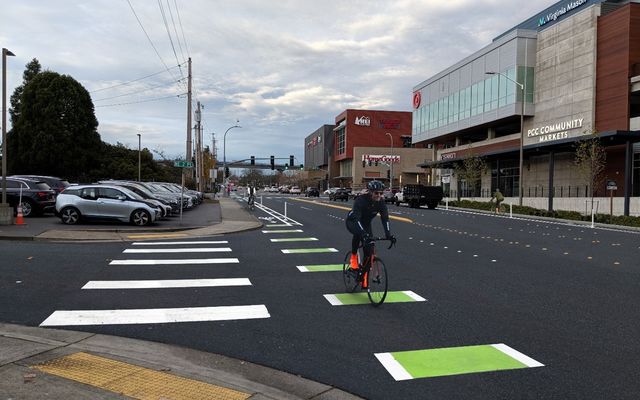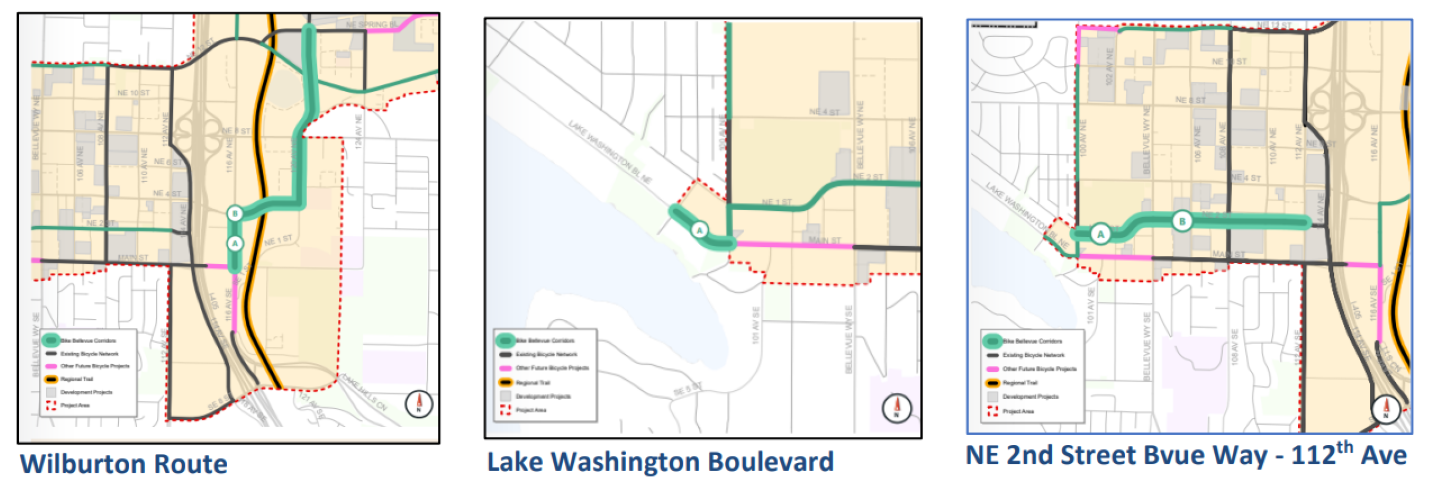Published April 12 2024

Design and implementation for three corridors advanced by Transportation Commission
Bike Bellevue entered its next phase at the April 11 Transportation Commission meeting, with commissioners directing staff to advance three corridors to design and implementation in alignment with recent council feedback. The recommendation follows the March 25 City Council meeting, where council directed the commission to develop recommendations for action on each of the eleven Bike Bellevue corridors.
The three corridors recommended on Thursday to move forward toward final design and implementation are:
- Wilburton Route – 116th Avenue Northeast from Main Street to Northeast Fourth Street, Northeast Fourth Street from 116th Avenue Northeast to 120th Avenue Northeast and 120th Avenue Northeast from Northeast Fourth Street to Northeast Spring Boulevard
- Lake Washington Boulevard from 99th Avenue Northeast to 100th Avenue Northeast
- Northeast Second Street from Bellevue Way Northeast to 112th Avenue Northeast (Segment B)
These new bicycle facilities will provide important connections in Bellevue’s growing urban core. The Wilburton Route provides access from the business hub of Wilburton to Eastrail and the Spring District Link light rail station, which has on-demand bike lockers. It also closes a key gap in the bicycle network between Main Street and Eastrail and connects with the Spring Boulevard Northeast multipurpose path. The Lake Washington Boulevard segment will help provide safe bicycling access to Meydenbauer Bay Park and Old Bellevue. The Northeast Second Street corridor provides a connection between Downtown Park and the existing 108th Avenue Northeast complete street, which also connects to existing facilities on Main Street and Northeast 12th Street. The Northeast Second Street corridor and parts of the Wilburton route are also on the Vision Zero High Injury Network – a small portion of streets in Bellevue (8%) that account for most of the fatal and serious injury collisions in the city (83%).
The Transportation Commission action to move forward with these corridors is contingent on the development of an updated plan for the Northeast Second Street corridor that does not remove vehicle travel lanes. If city transportation staff are not able to redesign the corridor without removing these lanes, they will return to the commission to give them an explanation of the feasible design and the commission can give final approval or choose to place the corridor into another category.
Bike Bellevue is set to return to the Transportation Commission on June 13 for another study session to take further action on the remaining Bike Bellevue corridors. In the meantime, city staff will begin designing the three corridors and work on categorizing the remaining eight corridors. The categories, as approved by council, include corridors that would be implemented as permanent infrastructure rather than a rapid-implementation design, corridors that will be deferred to the next update of the Transportation Facilities Plan, and corridors that will not be implemented at this time. Funding for the design and implementation work comes from the city’s 2023-2029 Capital Investment Program.

